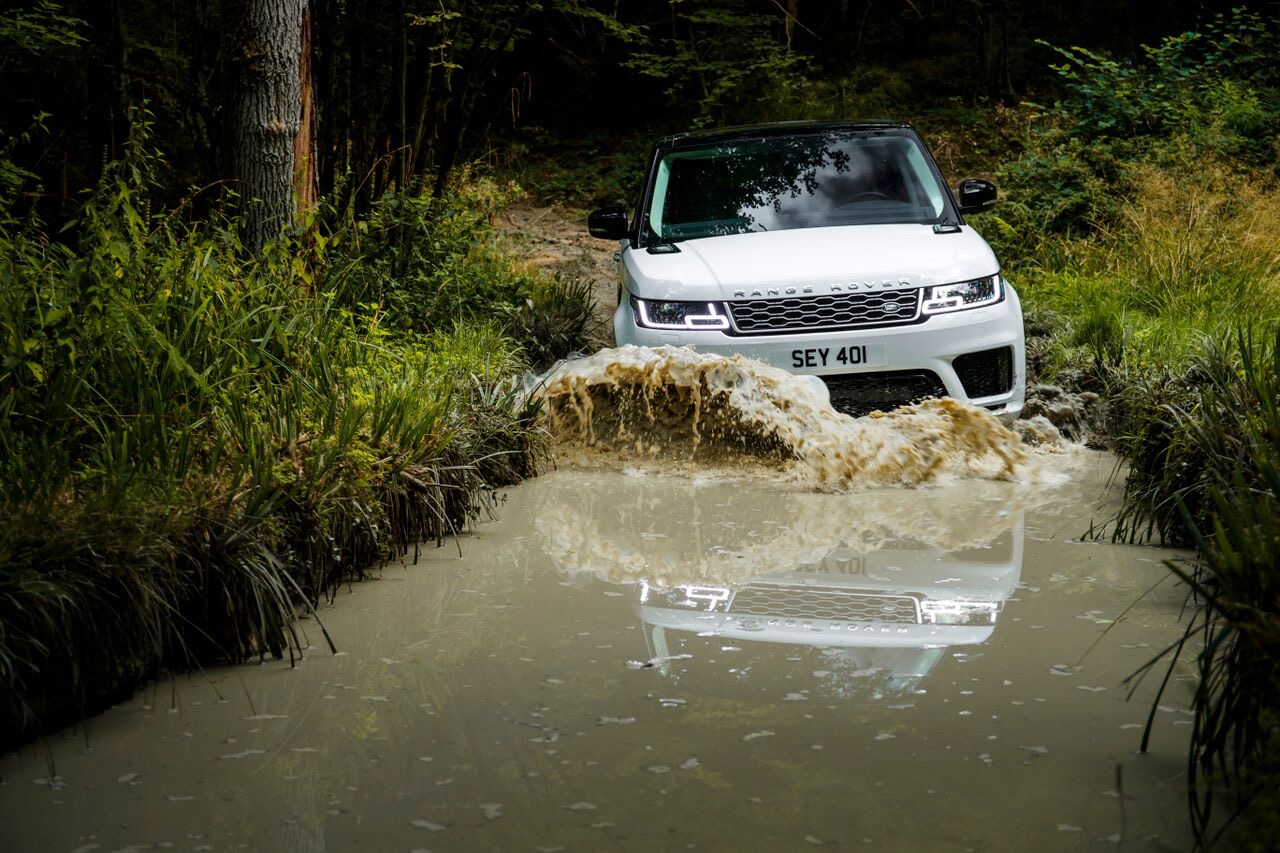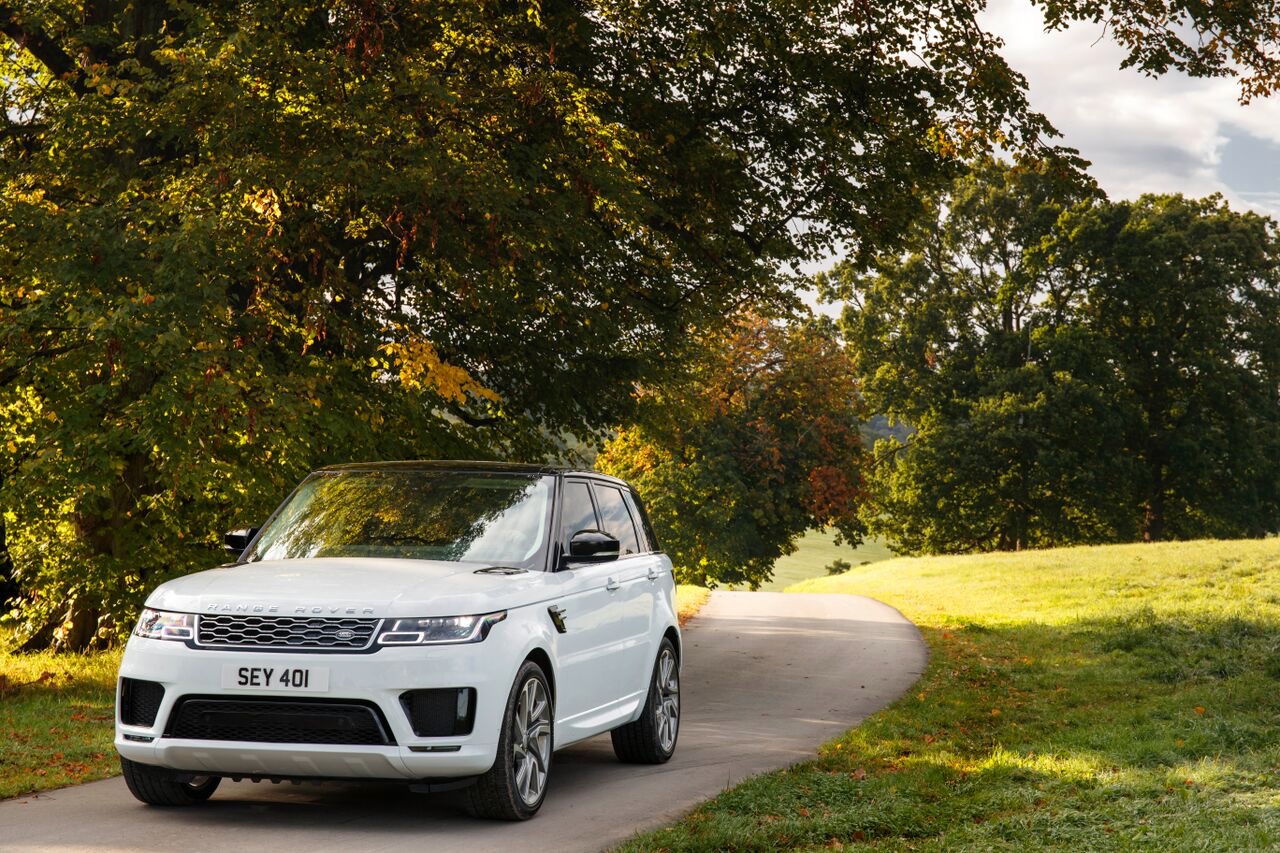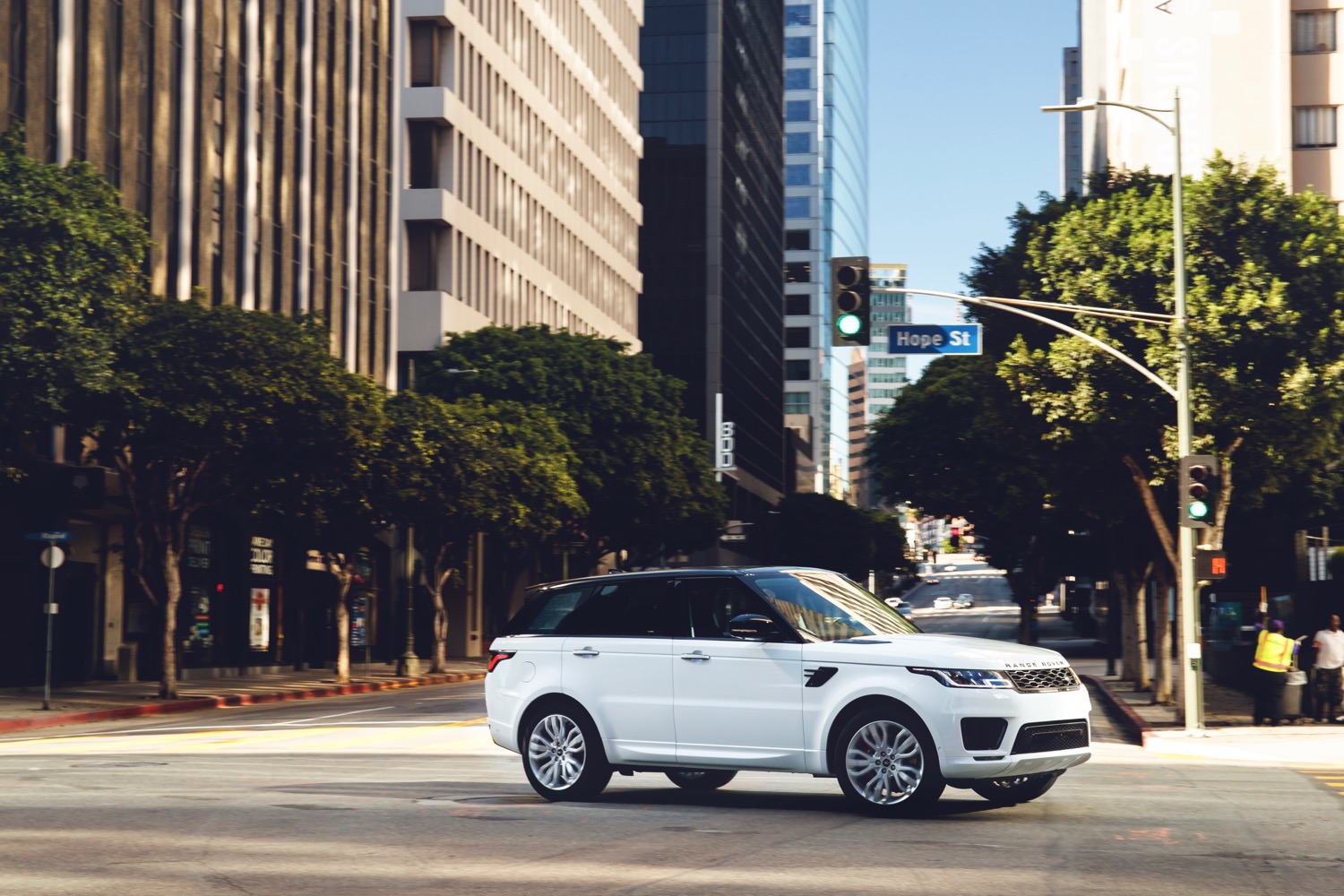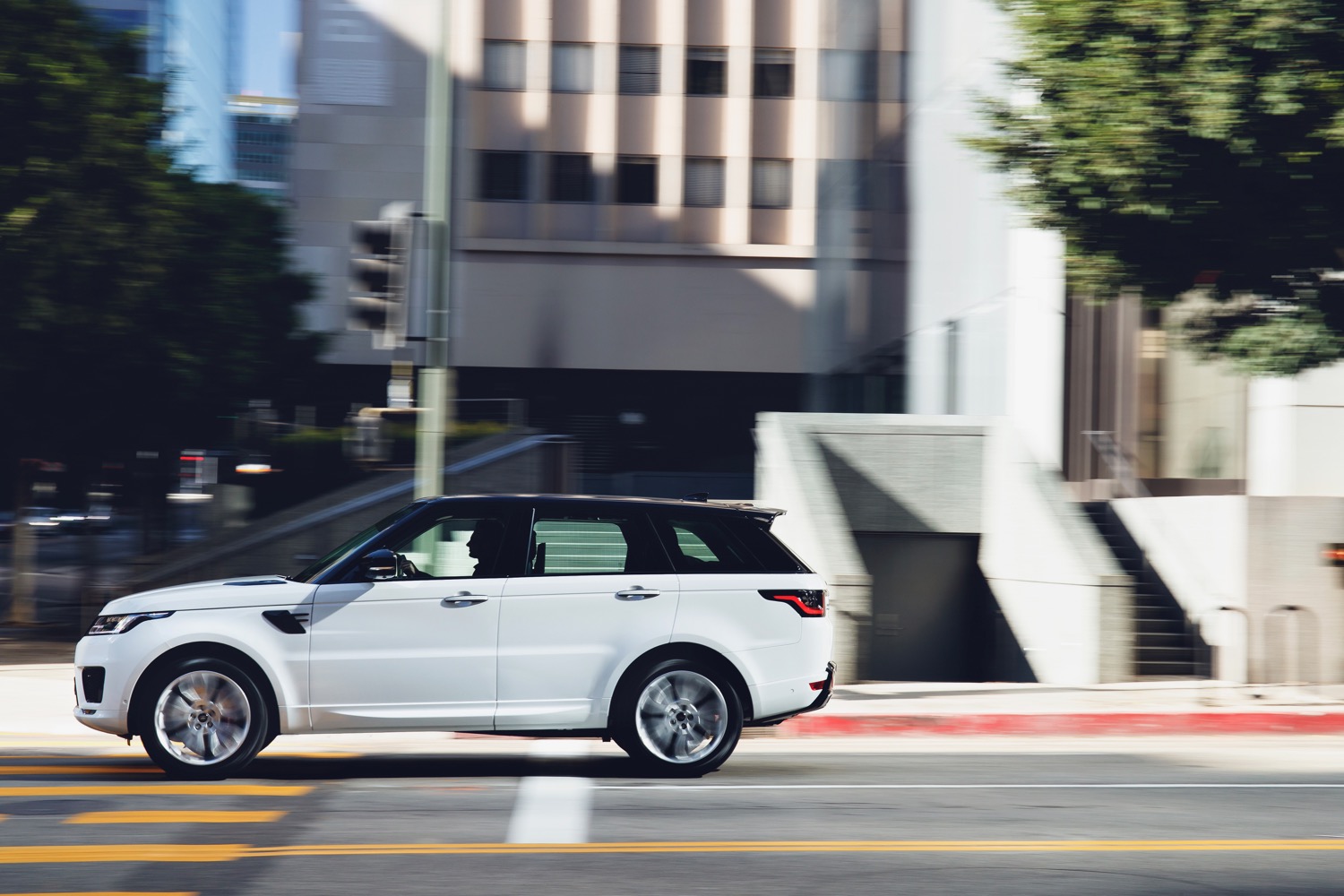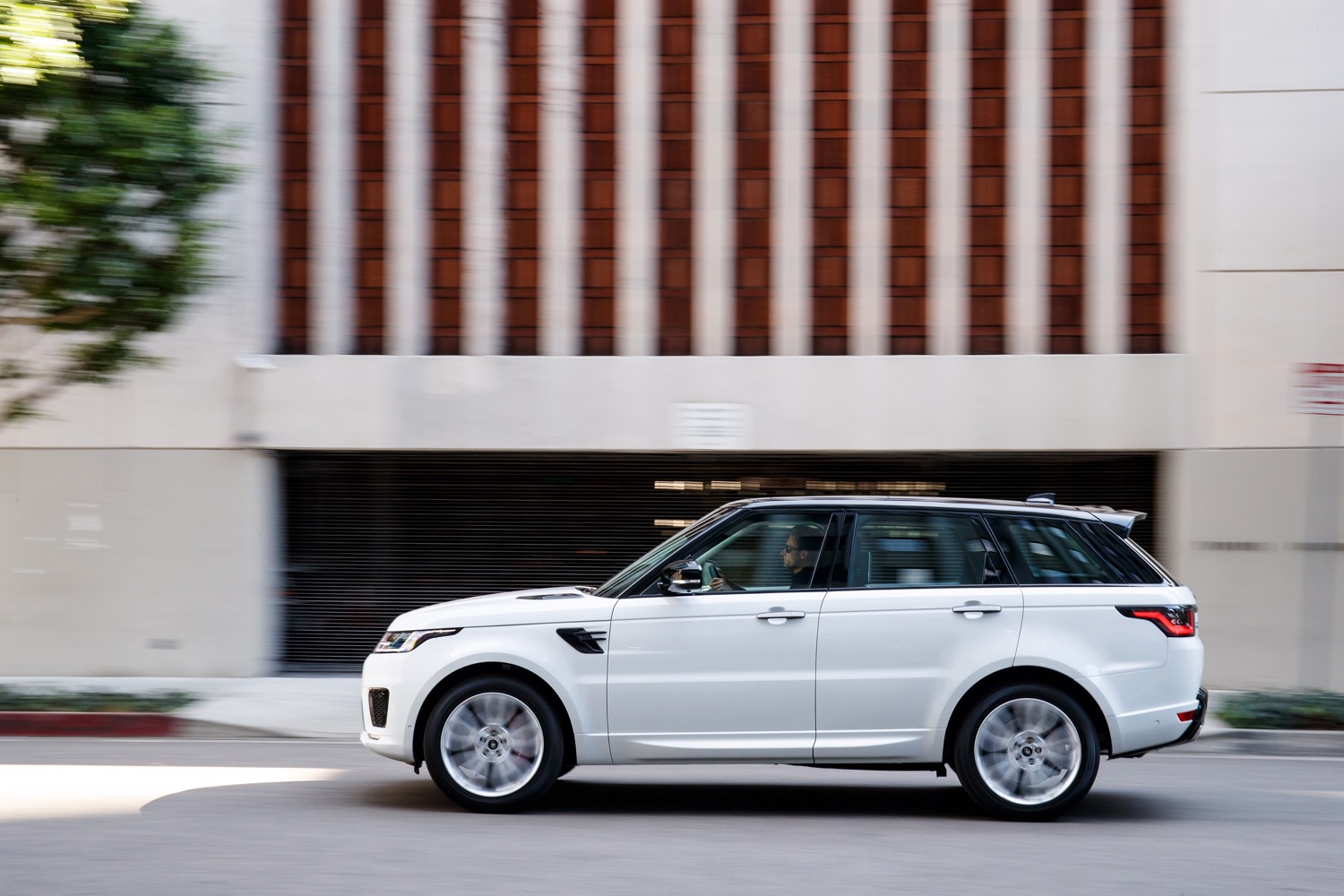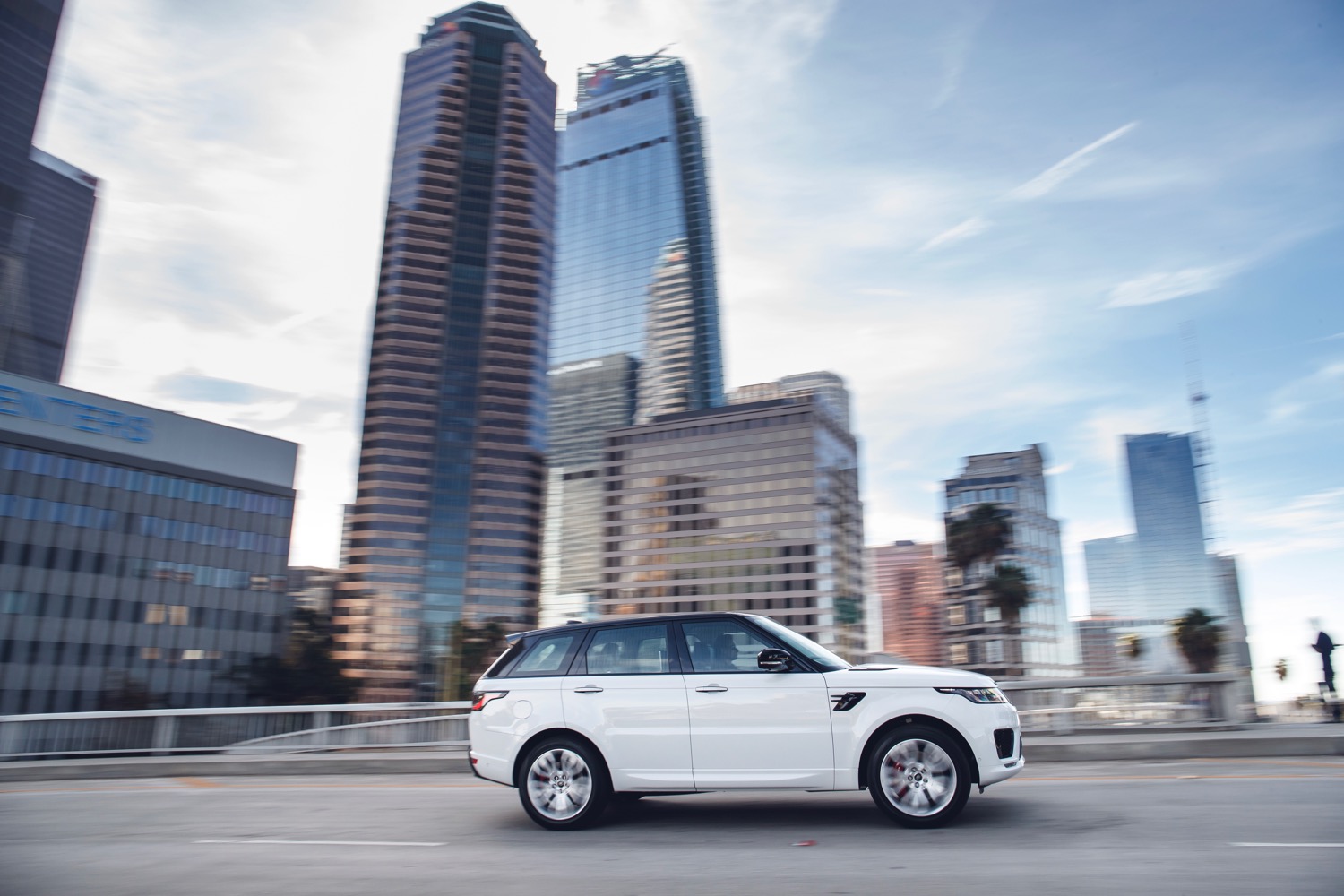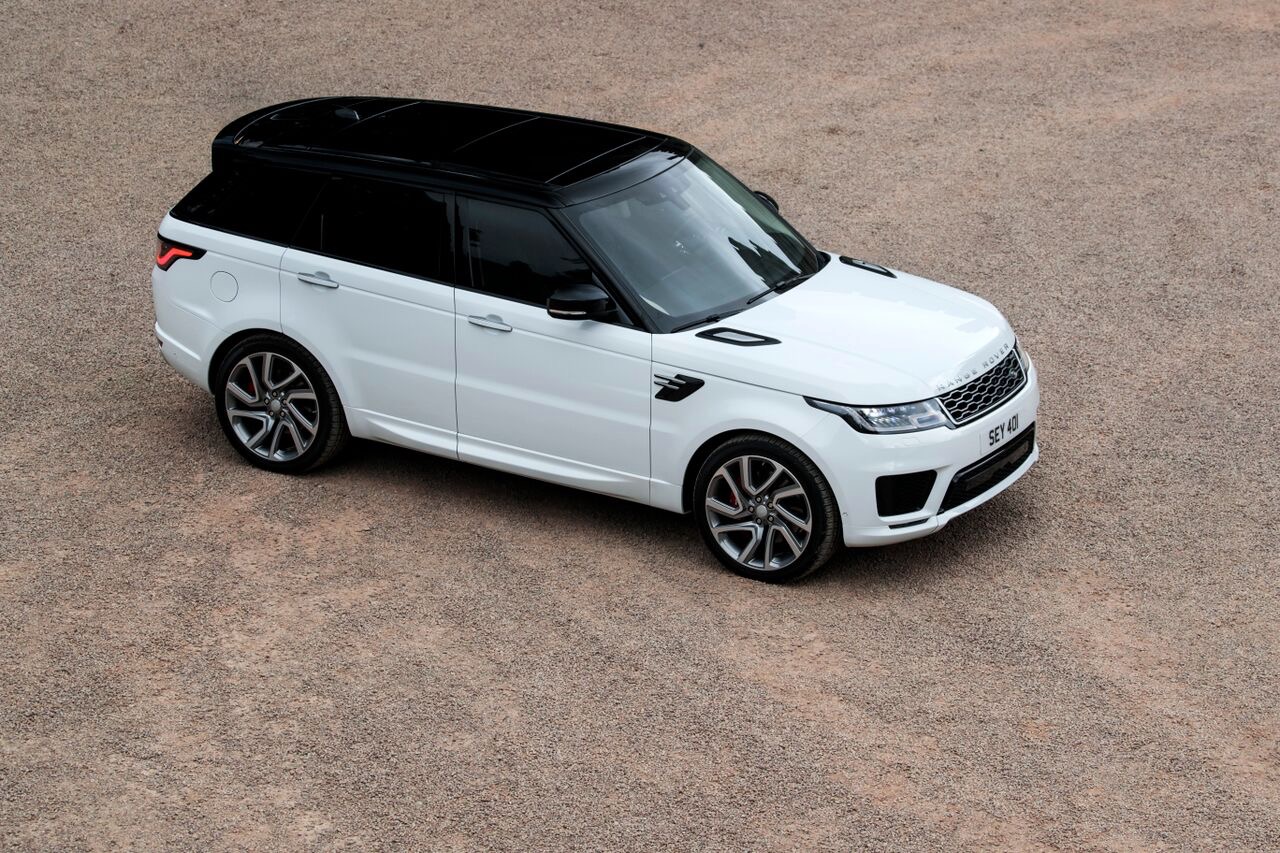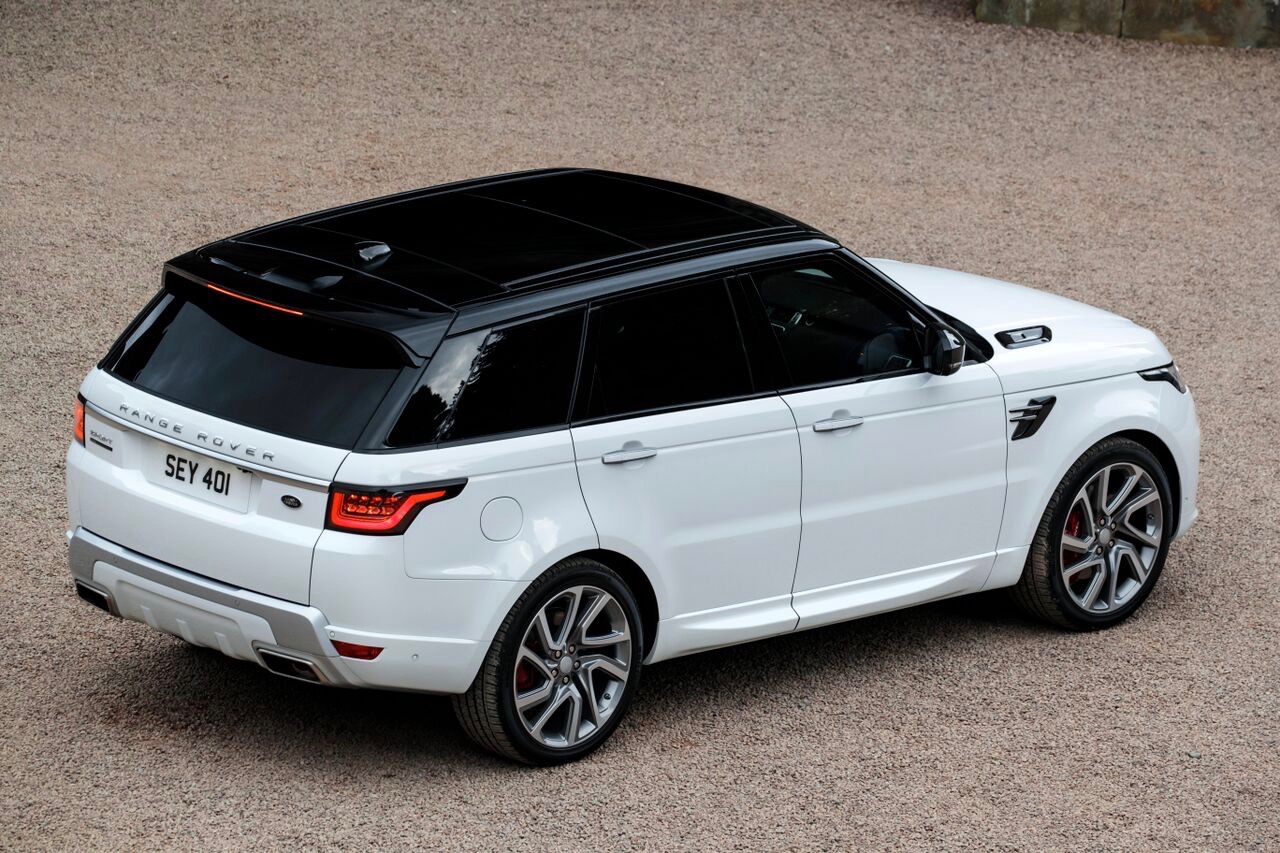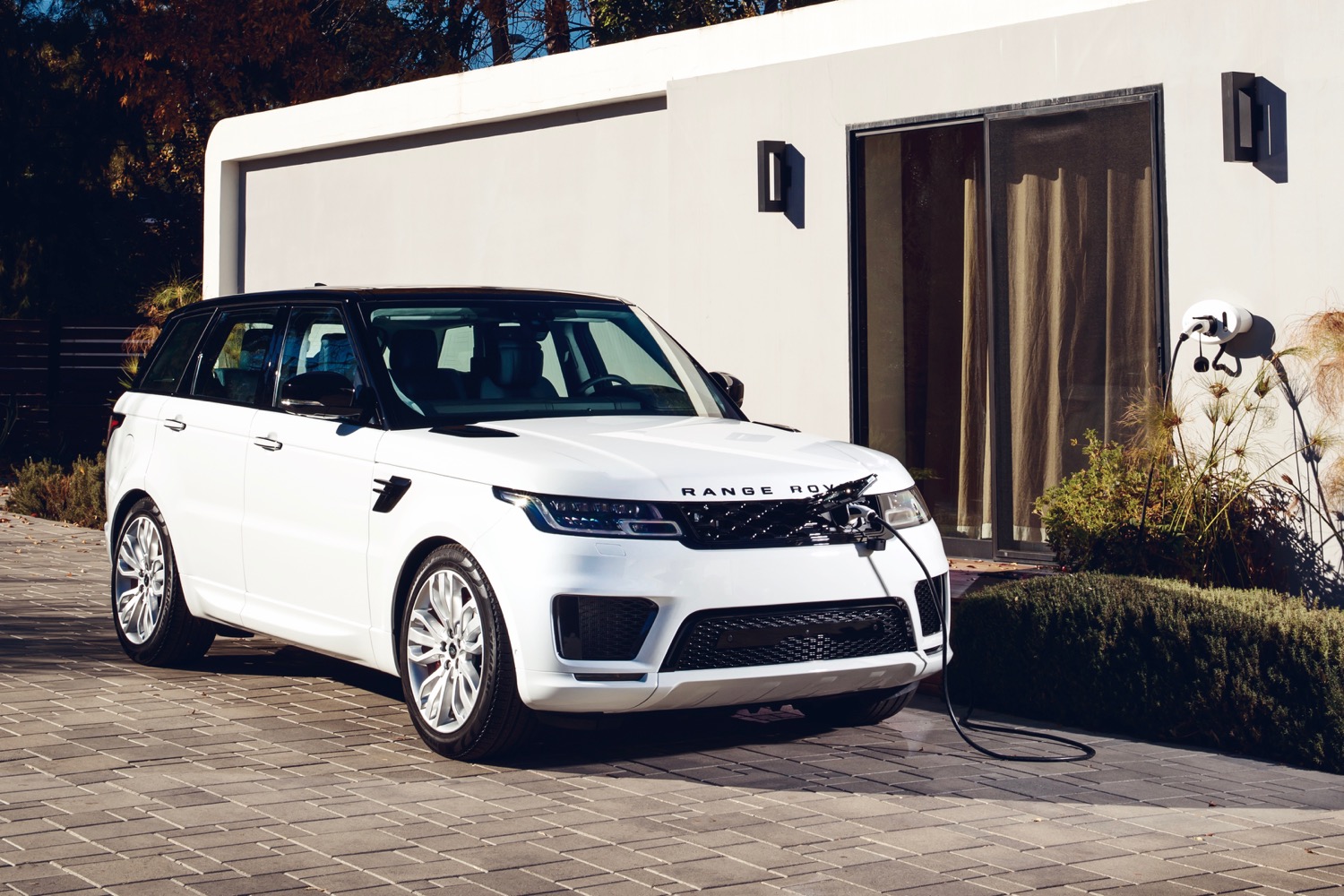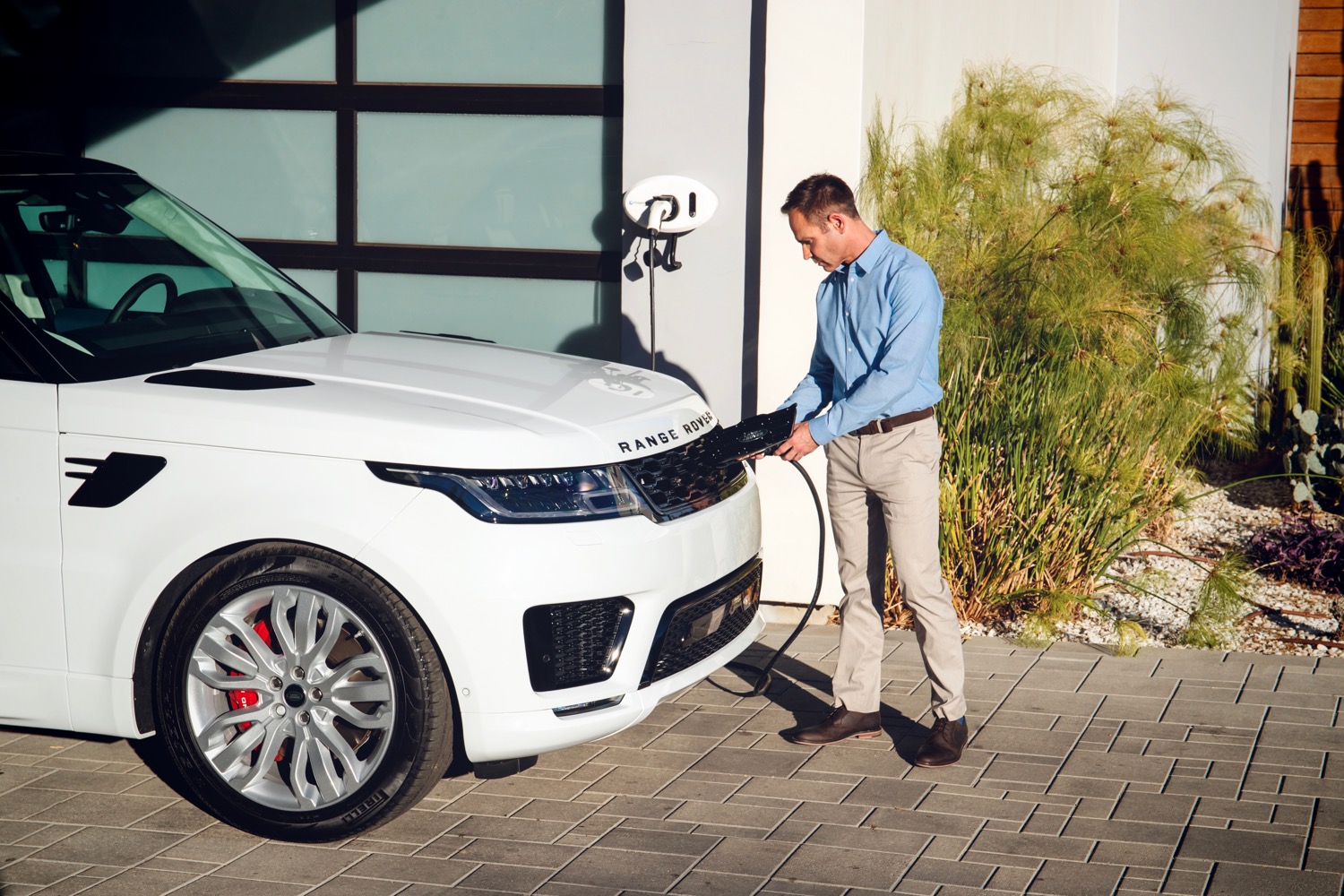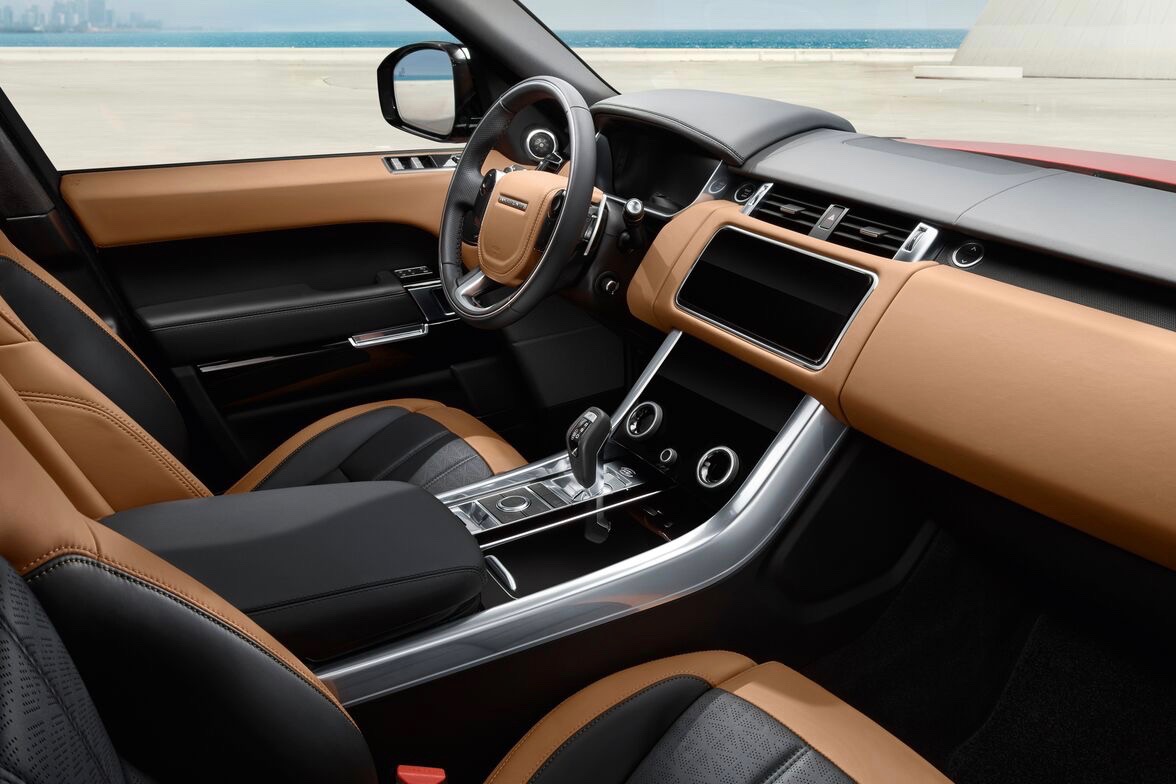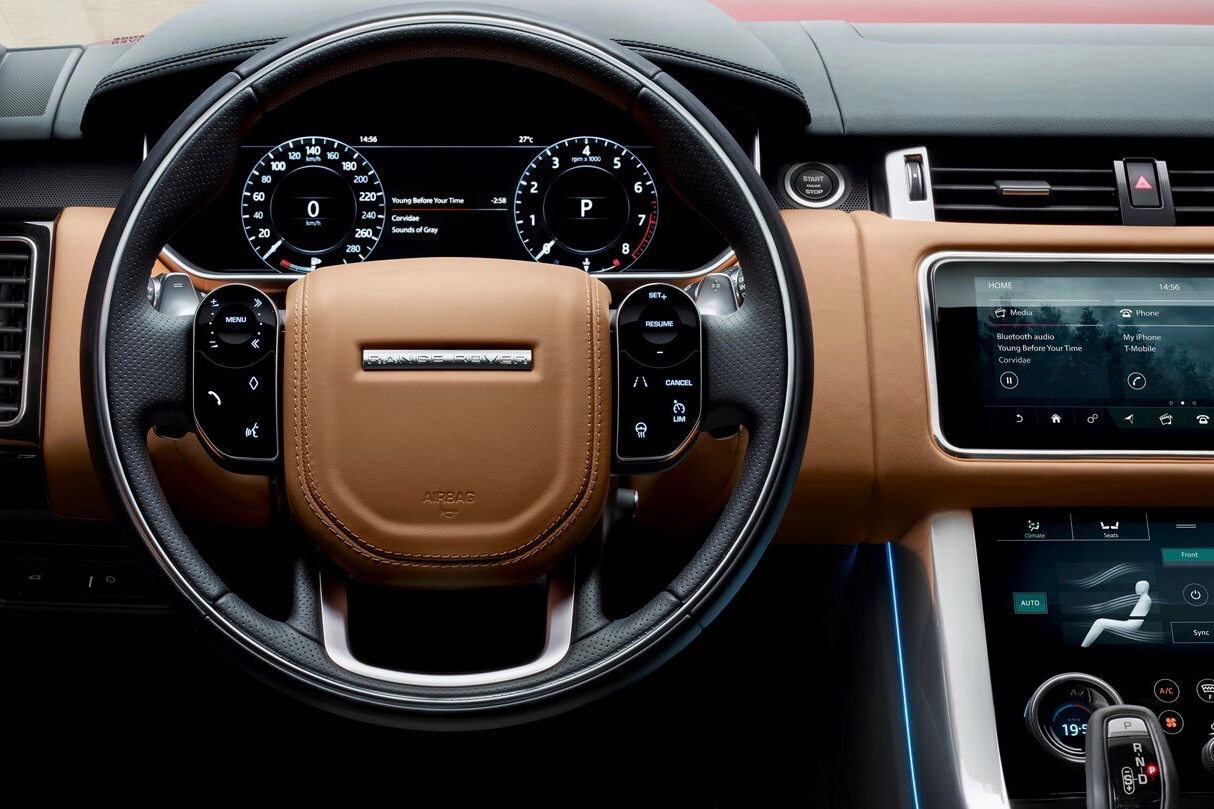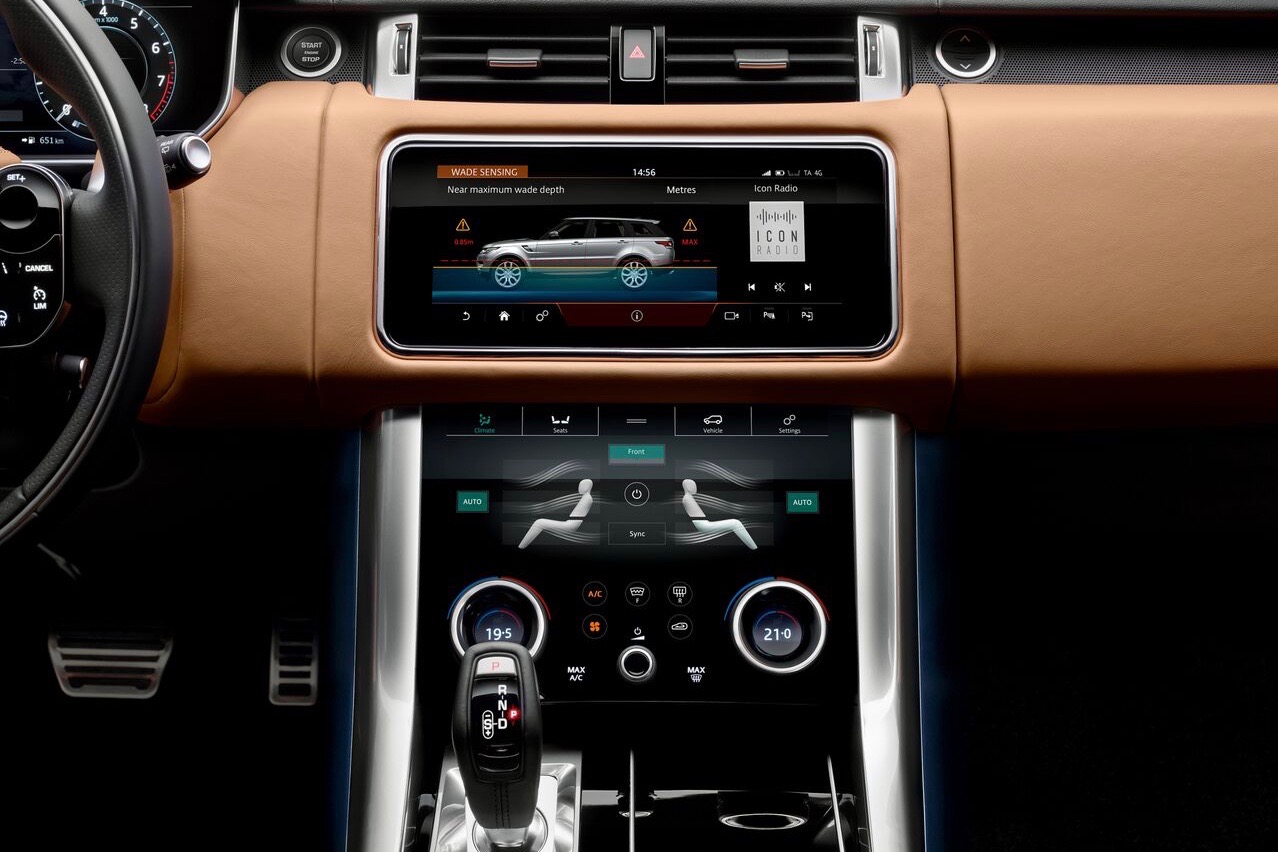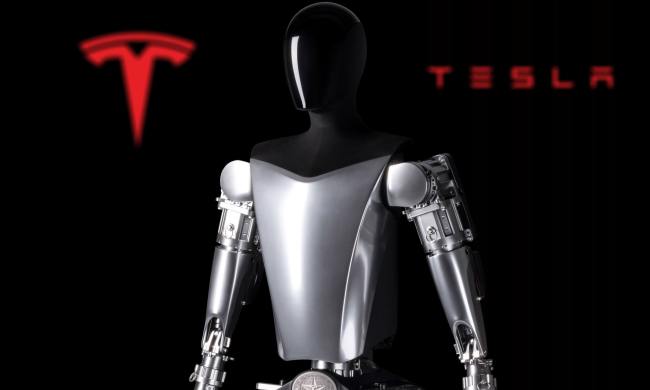For buyers who think the standard Range Rover is too big, or maybe just too conservatively styled, Land Rover offers the Range Rover Sport. For the 2019 model year, the Sport gets the same handful of upgrades as its big sibling, including more driver-assist tech and a new plug-in hybrid powertrain option.
The 2019 Land Rover Range Rover Sport P400e plug-in hybrid is part of Land Rover’s push to electrify its entire lineup over the next couple of years. Announced last year, it uses the same powertrain as the larger Range Rover P400e. That powertrain consists of a 2.0-liter turbocharged four-cylinder engine, an electric motor, and a 13.1-kilowatt-hour lithium-ion battery pack.
Total system output is 398 horsepower and 472 pound-feet of torque, the same as the Range Rover P400e. Land Rover says the Range Rover Sport P400e will do 0 to 60 mph in 6.3 seconds, reach a top speed of 137 mph, and travel 31 miles on electric power alone, when driven with a lighter foot. The instantly available torque of the electric motor should be helpful off-road, Land Rover predicts. The P400e has already scaled the 999-step staircase to China’s Heaven’s Gate to prove its credentials.
The rest of the powertrain lineup is unchanged, meaning buyers get plenty of other choices. Land Rover also offers a 3.0-liter supercharged V6 with 340 hp or 380 hp, a 254-hp 3.0-liter turbodiesel V6, and a 518-hp 5.0-liter supercharged V8. But if you really want your Range Rover Sport to be sporty, you need to go for the SVR performance model. Packing a 575-hp version of the V8, it can sprint from 0 to 60 mph in 4.3 seconds, according to Land Rover.
Like the big Range Rover, the Range Rover Sport also gets a new Wade Sensing system for 2019. It uses sensors on the undersides of the exterior mirrors to monitor the depth of water the vehicle is wading into. Land Rover claims the Range Rover Sport can wade into water up to 33.5 inches deep, and the system will warn the driver if they are exceeding that limit. Not that most owners will be testing that particular capability in the real world.
The other big tech news for 2019 is the addition of adaptive cruise control with steering assist as part of the new Driver Assist Pack, although these features are already available on a number of vehicles from other brands. Carryover features include autonomous emergency braking, blind-spot monitoring, lane keep assist, traffic sign recognition, a driver condition monitor, and a suite of park-assist features, including a 360-degree camera system.
The InControl Touch Pro Duo infotainment system introduced for the 2018 model year returns, featuring two 10.0-inch touchscreens and a 12.0-inch display screen for the driver, plus an optional head-up display. Land Rover boasts of 14 ports, encompassing USB, 12-volt, and HDMI, plus a built-in Wi-Fi hot spot that can support up to eight devices.
Pricing for the 2019 Land Rover Range Rover Sport starts at $66,750 for a base SE model with the 340-hp 3.0-liter supercharged V6, and goes up to $113,600 for the range-topping SVR. The new-for-2019 P400e plug-in hybrid model starts at $78,300.
